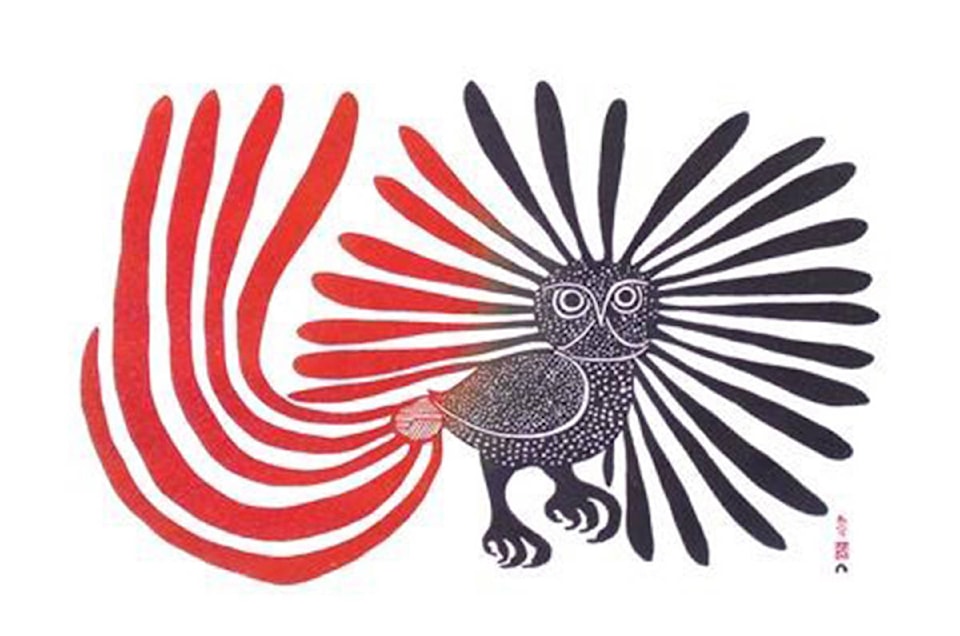Inuk artist Marc Tungilik spent almost every day hacking away at soapstone and the bones of the animals he hunted, reincarnating arctic life with his carvings of musk ox, owls, bears and the people who reside in whatšĶÐßēÝŅÐūŋËųs now known as Nunavut.
He sold his wares for as little as one dollar to afford the gas that kept his seven children warm, his daughter recalls. More than three decades after the carveršĶÐßēÝŅÐūŋËųs death, many of his works now fetch thousands of dollars on the auction block, but Theresie Tungilik said she hasnšĶÐßēÝŅÐūŋËųt seen a dime.
ThatšĶÐßēÝŅÐūŋËųs because Canada doesnšĶÐßēÝŅÐūŋËųt entitle visual artists and their estates to a share of the profits when their works are resold, but advocates like Tungilik are hoping that will change as Ottawa conducts a mandatory review of the Copyright Act, set to wrap up in early 2019.
šĶÐßēÝŅÐūŋËųI really feel like this is the missing link. If the artist resale rights became law in Canada, it would be a full circle,šĶÐßēÝŅÐūŋËų said Tungilik, an advisor to the Nunavut government on the arts and traditional economy. šĶÐßēÝŅÐūŋËųAll of Canada would profit more, because itšĶÐßēÝŅÐūŋËųs not just Inuit. ItšĶÐßēÝŅÐūŋËųs all about Canadian artists.šĶÐßēÝŅÐūŋËų
Creators in many fields, such as musicians and authors, collect royalties every time their works are used or purchased. But for commercial exchanges of artwork, the only money artists make is from the initial sale, although they can receive license fees if their creations are exhibited or reproduced.
Groups like Canadian ArtistsšĶÐßēÝŅÐūŋËų Representation, or CARFAC, contend the current system allows every party involved in a resale šĶÐßēÝŅÐūŋËų such as art dealers, galleries, auction houses and sellers šĶÐßēÝŅÐūŋËų except the artist to profit from a workšĶÐßēÝŅÐūŋËųs appreciating value.
After a similar proposal fizzled out in 2013, CARFAC is urging federal officials to mandate that artists receive a five per cent royalty for works resold for more than $1,000 on the market. The cost would be split between the art dealer and the seller, and a government-approved collective would administer the funds.
Critics of the proposal argue that resale royalties would be bad for Canadian art businesses while only an elite cadre of artists and their estates would see significant financial gain.
The House of Commons heritage committee heard testimony in May from a department official who said the government has looked into the issue, but there is little data about the impact a resale royalty could have on CanadašĶÐßēÝŅÐūŋËųs creative economy, according to a transcript of the meeting. The heritage committee is studying artist renumeration models in relation to the review of the Copyright Act.
But CARFAC executive director April Britski said even a $50 royalty on a $1,000 work could mean a lot for a struggling artist. In other cases, she said the royalty would ensure that artists reap the rewards of their slow-burning success.
As an example, she points to Inuk artist Kenojuak Ashevak, a proponent of artist resale rights before her death in 2013, whose print šĶÐßēÝŅÐūŋËųEnchanted OwlšĶÐßēÝŅÐūŋËų was first sold for $24 in 1960, according to advocates, and hammered down at auction in November for $216,000. Had CARFACšĶÐßēÝŅÐūŋËųs proposal been in place, $10,800 would have gone to her estate.
These royalties would allow visual artists to profit not only from resales within CanadašĶÐßēÝŅÐūŋËųs borders, said Britski, but through reciprocal agreements with many of the more than 90 countries she said recognize resale rights.
Some of the worldšĶÐßēÝŅÐūŋËųs largest art markets, including the U.S. and China, have not adopted artist resale royalties, while the U.K. and Australia did so in 2006 and 2010 respectively. According to a report presented in 2017 to the United Nations copyright agency, the World Intellectual Property Organization, 38 per cent of resale royalties in Australia have gone to Indigenous artists, amounting to approximately 1.4 million Australian dollars between 2010 and 2015.
In Canada, Britski said Indigenous artists would be among the greatest beneficiaries of a resale royalties regime. This could have particular consequence for Inuit artists, who comprise roughly a quarter of the Inuit adult population and contributed more than $64 million to the economy in 2015, according to Statistics Canada.
But Mark London, director of the Art Dealers Association of Canada, said artist resale royalties would hurt the very people theyšĶÐßēÝŅÐūŋËųre intended to help šĶÐßēÝŅÐūŋËų artists.
London, who owns MontrealšĶÐßēÝŅÐūŋËųs Galerie Elca London specializing in Indigenous art, said galleries and auction houses would have to shoulder substantial costs to administer a resale fee, which in most cases he said would be so small as to barely benefit artists except for a privileged few and their estates. Not all works increase in value over time, he said, so dealers would be paying royalties on works worth less than their initial sale.
The regime proposed by CARFAC would be šĶÐßēÝŅÐūŋËųdisastrousšĶÐßēÝŅÐūŋËų for Inuit art, London argues. Multiple resales through Inuit-run co-ops and dealers are often required to bring Inuit art to market, he said, so galleries would have to pay royalties before a work is even seen by their customers, in addition to the hefty fees associated with shipping pieces south.
Overall, London said these costs could discourage artists from using dealers and instead conduct person-to-person exchanges, which would not be subject to the proposed royalty. Eventually, he cautions, more galleries and auction houses would shutter, leaving artists with fewer venues to exhibit their work.
For Tungilik, who is an artist like her father, resale royalties are not just about the money, but recognizing that art has value.
šĶÐßēÝŅÐūŋËųI think my dad is very deserving of this reward,šĶÐßēÝŅÐūŋËų she said. šĶÐßēÝŅÐūŋËųIt would be an honour, as family members, to be able to see that.šĶÐßēÝŅÐūŋËų
Adina Bresge, The Canadian Press
Like us on and follow us on .



